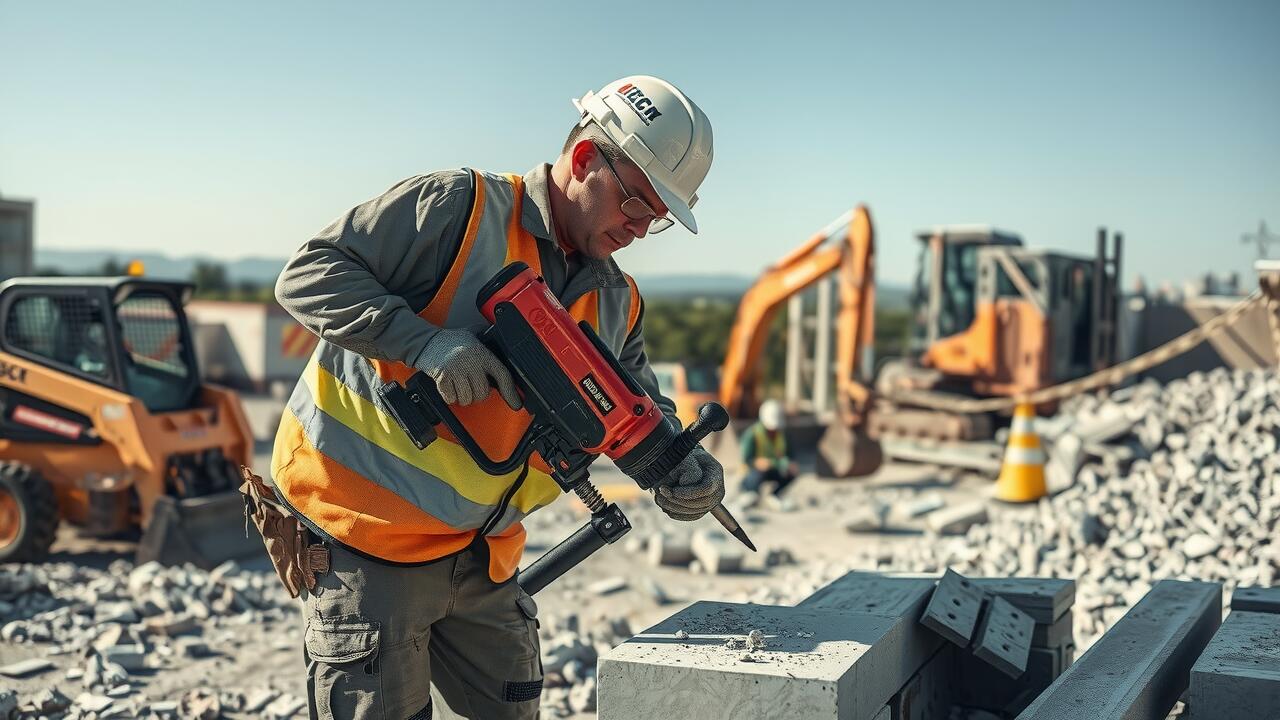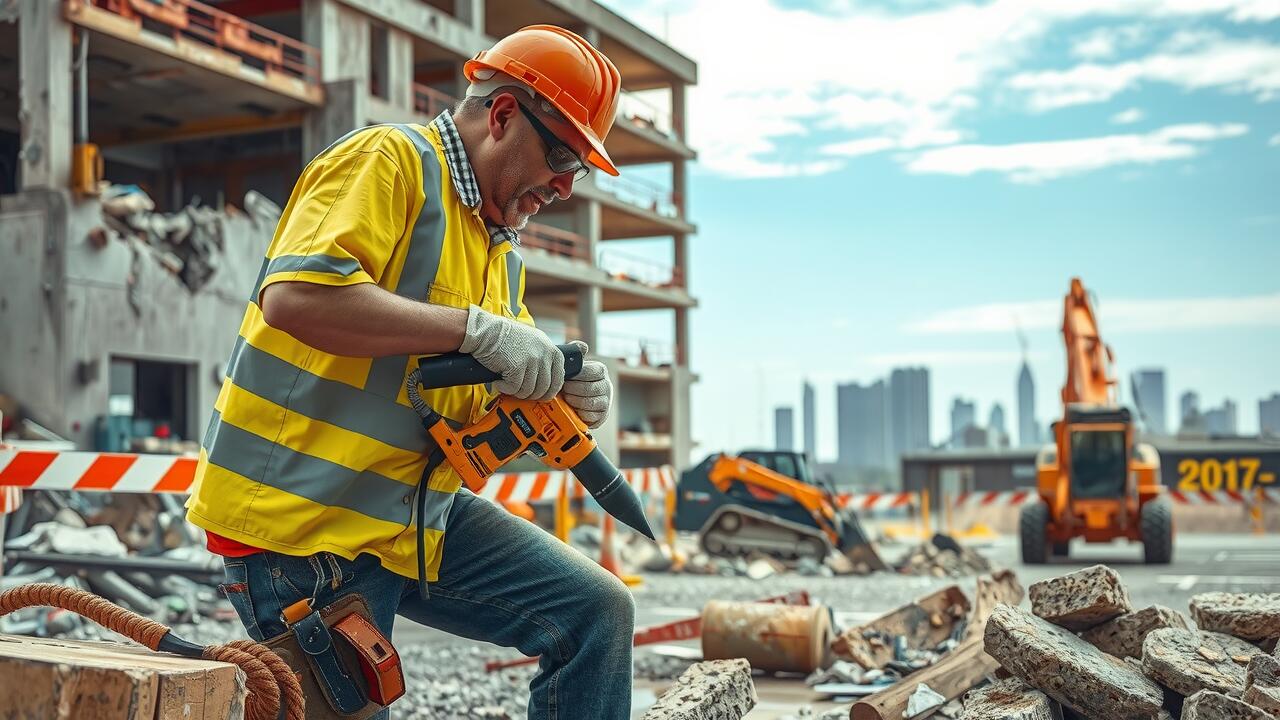
Table Of Contents
Support Tools for Lifting and Moving
In any concrete demolition project, effective lifting and moving tools are essential for ensuring safety and efficiency. These tools help manage heavy slabs and debris, minimizing the risk of injury to workers. Hydraulic jacks and dollies are often used to lift large pieces, while forklifts can transport materials across the site with greater ease. Proper equipment not only enhances productivity but also streamlines the entire demolition process.
When planning for concrete demolition, consider hoists and winches as vital components of your toolkit. These devices can tackle significant weights and elevate materials to needed heights. Using pulleys and ropes, winches provide a mechanical advantage, making it easier to move heavy items without straining the workforce. Properly integrating these tools into the workflow results in a more organized approach to handling materials and debris.
The Role of Hoists and Winches
Hoists and winches are essential tools in the realm of concrete demolition, particularly when dealing with heavy and bulky materials. These devices enable operators to lift concrete sections safely and maneuver them into position for removal. The capacity of hoists and winches to handle significant weight makes them invaluable for large-scale projects where manual lifting is not feasible. Their efficiency ensures faster progress on demolition sites, reducing labor costs and the risk of injury associated with moving heavy objects.
Incorporating hoists and winches into concrete demolition projects enhances overall safety and productivity. By employing these tools, workers can focus on strategic demolition tasks without the constant strain of manually lifting materials. Given the unpredictable nature of concrete structures, having a reliable lifting system allows for greater control and precision during the demolition process. These tools serve as a critical component in modern concrete removal efforts, facilitating smoother workflows and ensuring that projects are completed within set timelines.
Dust Control Solutions
Effective dust control is a crucial aspect of concrete demolition projects. The process typically generates significant dust, which can be harmful to workers and the surrounding environment. Implementing wet methods can significantly reduce airborne dust particles. Spraying water on the concrete during demolition helps to keep dust levels manageable.
Another effective solution involves the use of industrial vacuums equipped with high-efficiency particulate air (HEPA) filters. These vacuums capture fine dust particles created during concrete demolition, ensuring a cleaner workspace. Using these dust control solutions not only enhances safety but also promotes compliance with local regulations regarding construction site cleanliness.
Implementing Wet Methods and Vacuums
Incorporating wet methods into concrete demolition projects can significantly reduce dust emissions and improve air quality on the job site. This technique involves applying water to the surface being demolished, which helps to keep fine particles from becoming airborne. Spraying water also aids in the breakdown of the concrete, making it easier to manage and remove. When done correctly, this approach ensures a safer working environment for everyone involved.
Using vacuums during concrete demolition further enhances dust control efforts. Specialized industrial vacuums connected to power tools capture dust at the source, preventing its spread throughout the area. By integrating these vacuum systems, contractors can maintain a cleaner workspace and minimize health risks associated with inhaling concrete dust. Together, wet methods and vacuum systems create a comprehensive strategy for effective concrete demolition, leading to more efficient and safer project outcomes.
Concrete Recycling Methods
Concrete recycling plays a crucial role in responsible construction practices, especially during concrete demolition projects. By reusing broken concrete, contractors can help minimize waste and reduce the environmental impact associated with disposal. Crushed concrete can be used as a base material for new road construction or as an aggregate for new concrete mixes. The process not only recovers valuable materials but also promotes sustainable building practices.
To facilitate concrete recycling, several tools are necessary for efficient material recovery. Hydraulic breakers, for instance, are effective for breaking down large sections of concrete into manageable pieces. After demolition, mobile crushers can process the debris on-site, making it easier to transport and repurpose. Implementing these tools in concrete demolition ensures that materials are not only properly recycled but also ready for future construction projects.
Tools for Efficient Material Recovery
Efficient material recovery during concrete demolition is crucial for minimizing waste and promoting sustainability. Various tools and equipment aid in this process, facilitating the extraction of reusable materials. Hydraulic shears and concrete crushers are commonly utilized to break down large sections of concrete into manageable pieces. These tools not only enhance productivity but also ensure that valuable materials like steel rebar can be retrieved for recycling.
Additionally, bucket scoops and pneumatic hammers play significant roles in material recovery. Bucket scoops allow for easy collection and transportation of crushed concrete, while pneumatic hammers help to precisely break apart structures, making it easier to separate debris. Employing these tools effectively streamlines the recovery process, leading to better outcomes in concrete demolition projects. As a result, contractors can uphold environmental responsibilities while also improving their operational efficiencies.
FAQS
What are essential tools for lifting and moving concrete during demolition projects?
Essential tools for lifting and moving concrete include hoists, winches, forklifts, and dollies, which help safely transport heavy materials from one location to another.
How do hoists and winches contribute to concrete demolition?
Hoists and winches provide the necessary mechanical advantage to lift and move heavy concrete pieces with minimal effort, ensuring safety and efficiency on the job site.
What are some effective dust control solutions for concrete demolition?
Effective dust control solutions include wet methods, which involve using water to suppress dust, as well as high-efficiency vacuums that capture airborne particles during the demolition process.
How do wet methods help in controlling dust during concrete demolition?
Wet methods help control dust by spraying water on the demolition site, which dampens the concrete and prevents dust from becoming airborne, thereby improving air quality and safety.
What tools are recommended for recycling concrete materials?
Recommended tools for recycling concrete materials include crushers, screens, and magnets, which aid in breaking down concrete and separating reusable aggregates from contaminants.

